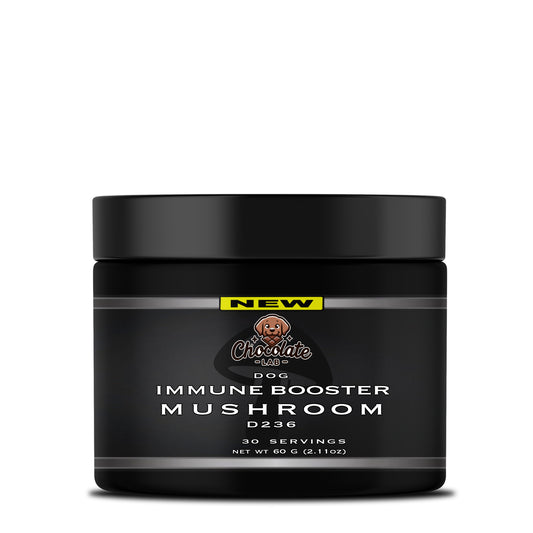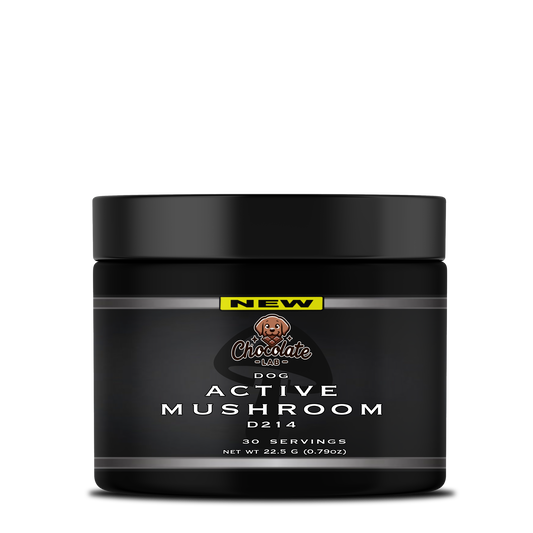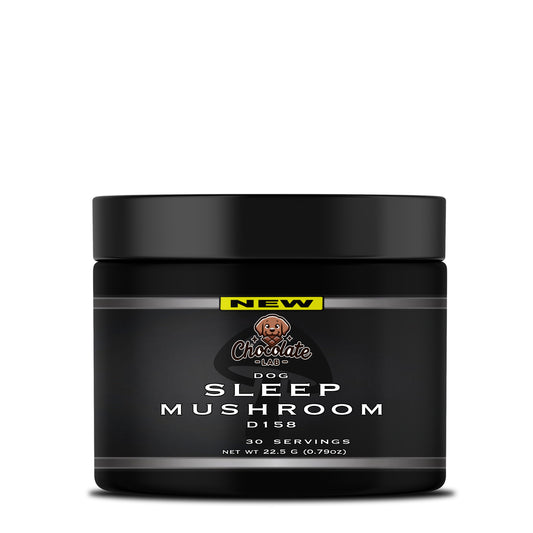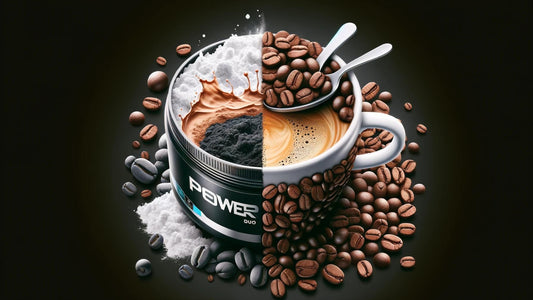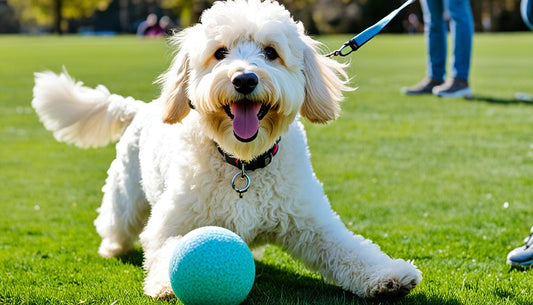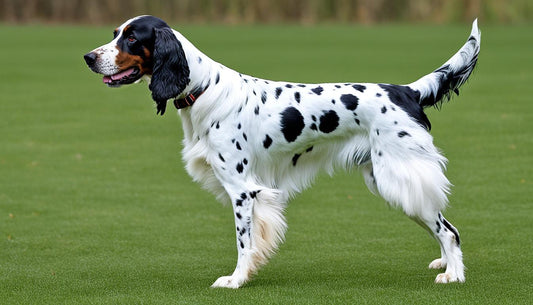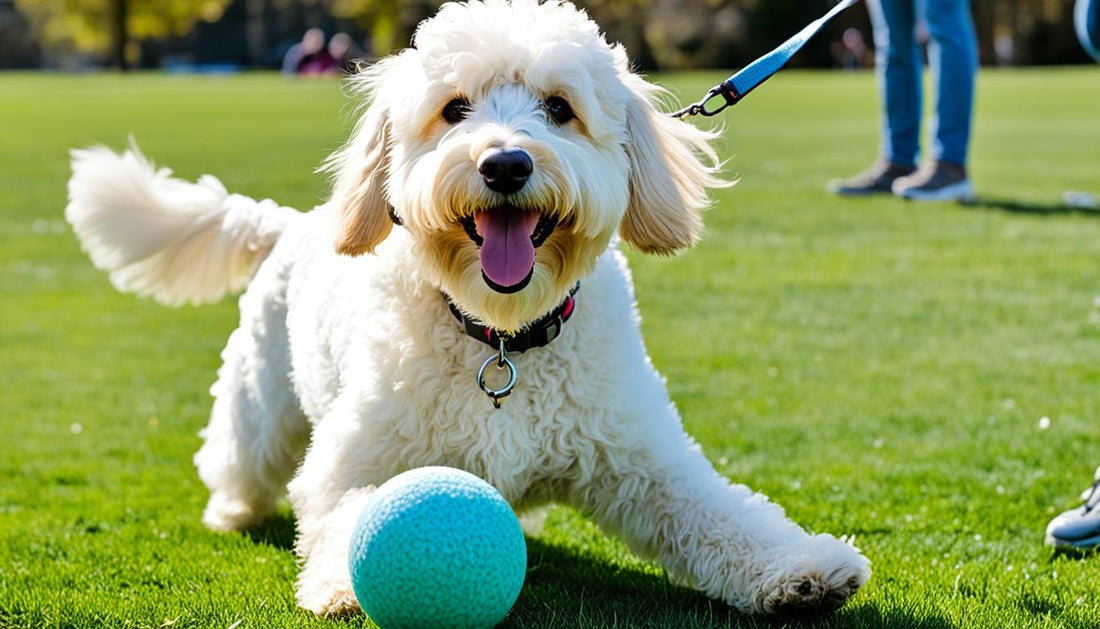
White Labradoodle: Cute, Majestic & Full of Surprises! 2024

The White Labradoodle, with its endearing eyes and snow-white curly coat, has ascended as a beacon of hope for allergy sufferers and a beacon of joy for families across the United States. Often celebrated as the perfect hypoallergenic dog, this breed combines the cleverness of the Poodle with the loyalty of the Labrador Retriever, creating a companion that's both brainy and affectionate. But what truly makes the White Labradoodle a top contender for the title of the ultimate family-friendly dog? Through this comprehensive guide, we unveil the secrets to their care, the truths behind their temperament, and the fascinating facts of their existence. Prepare to be charmed as we dive into the life and delights of raising a White Labradoodle.
Key Takeaways
- Understand the unique care requirements that ensure the well-being of a White Labradoodle.
- Discover the hypoallergenic qualities of the Labradoodle's coat and its implications for allergy-prone individuals.
- Learn about the personality traits that make the White Labradoodle an ideal pet for family settings.
- Explore the history and background of the breed to better appreciate its current popularity.
- Gain insights into the nutrition, grooming, and exercise needs essential for a healthy Labradoodle.
Introduction to White Labradoodles
The white Labradoodle stands out in the vast canine universe with its unique blend of intelligence, charisma, and hypoallergenic qualities. Born from prestigious parentage, the white Labradoodle inherits the best of the Labrador Retriever's devoted nature and the Poodle's sharp-witted prowess. It's no wonder that Labradoodle breeders take immense pride in raising these magnificent dogs. In this section, we'll explore the reasons behind their soaring popularity and what makes white Labradoodle puppies such a sought-after addition to families.
Across the nation, this breed has captured hearts with its pristine coat and affable demeanor. Not only do they bring joy and companionship, but they've also provided a solution for those affected by pet allergies. Their low-shedding coat has been a game-changer, making them a premier choice for those who love dogs but despise the allergens they can carry. Here's a peek into what makes the white Labradoodle truly special.
According to the American Kennel Club, the Labradoodle's appeal lies in their adaptability to various lifestyles, making them ideal for both city dwellers and those with sprawling backyards. The Labradoodle Association further notes their ease in bonding with humans, which is why they effortlessly become part of the family.
Aside from their remarkable adaptability and genial nature, it’s worth noting the striking physical beauty of the labradoodle white variant. Breeders and enthusiasts often marvel at the purity of their coat, which ranges in textures but always maintains that eye-catching brightness.
- Affectionate companions suitable for all ages
- Hypoallergenic fur reducing allergic reactions
- Intelligent and eager to please, making them highly trainable
- Active lifestyle companions requiring regular exercise
However, prospective owners should consider not only the attributes of these dogs but also the responsibility they entail. Responding to the need for this knowledge, we delve into what future guardians of white Labradoodle puppies should anticipate.
The Origins of the White Labradoodle

The journey of every designer dog breed starts with a purpose, and the white Labradoodle's tale begins with an ambition to create the ultimate service dog. A marvel of genetic selection, this breed's history is not just a fad but a result of careful and considered expertise.
Labrador Retriever and Poodle Cross
The Labradoodle finds its origins in the crossbreeding of two highly esteemed dog breeds: the intelligent and stately Poodle with the friendly and devoted Labrador Retriever. This blend aims not only to retain the best attributes of its parents but to achieve a coat that accommodates those with allergies, making the Labrador Retriever mix a revolutionary step in dog breeding.
The Rise of Designer Dog Breeds
The dawn of designer dog breeds has seen a surge in popularity over recent decades, with the Labradoodle leading the charge among families and individuals on the hunt for a hypoallergenic pet. Their allure lies not just in their charming looks but also in their companionship and utility as service animals.
Australian Labradoodle vs Labradoodle
It's essential to distinguish between the plain Labradoodle and the white Australian Labradoodle. While both share a common ancestry, there are notable variations that enthusiasts and future owners should be aware of before bringing one of these loving creatures into their home.
| Feature | Labradoodle | Australian Labradoodle |
|---|---|---|
| Breeding Heritage | Poodle and Labrador Retriever mix | Poodle, Labrador Retriever, and other spaniel influences |
| Coat Texture | Varies widely from wavy to curly | More consistently curly and non-shedding |
| Temperament | Intelligent, friendly, varies depending on genetic randomness | Equally intelligent, typically more consistently predictable behavior |
| Hypoallergenic Qualities | Mostly hypoallergenic | Selected for higher hypoallergenic properties |
| Size | Depends on the Poodle size used for breeding | Similarly depends on the Poodle used, but standards have normalized sizes a bit more |
Understanding the intricacies between the two can aid aspiring owners in making an informed choice when considering a white Labradoodle or white Australian Labradoodle as a new family member. These fluffy companions are more than just pets; they're a statement of lifestyle, commitment, and the endless pursuit of joy through canine friendship.
Physical Characteristics of White Labradoodles

The classic curly-haired dog that has taken the dog-loving community by storm is none other than the white Labradoodle. Their stunning coat comes in a variety of textures, which is a significant part of their charm and a testament to their Poodle lineage. Let's delve into the notable characteristics that set apart these alluring companions.
Coat Types and Grooming Needs
A distinctive trait of the labradoodle dog is their coat. The non-shedding coat of a white Labradoodle can differentiate into three types: wool, which is similar to that of a purebred Poodle; fleece, a silky texture that falls in soft waves; and hair, which can be straighter and more similar to that of a Labrador Retriever. The Labradoodle Grooming Association highlights the importance of regular grooming to maintain the luxurious and functional quality of their fur.
Grooming routines include brushing a few times a week to prevent matting, and monthly baths to keep their white fur pristine. Professional grooming is recommended every 6-8 weeks to keep their coats in top condition and to manage any potential tangling that is all too common with curly-haired dogs.
Size Variations: Miniature to Standard
Whether it's a full grown white labradoodle or a miniature version you're considering, it's vital to understand that Labradoodles come in a range of sizes. According to the Dog Breed Weight Chart, sizes vary significantly; from the compact miniature, which stands around 14-16 inches at the shoulder, to the robust standard Labradoodle, towering up to 24 inches.
Here is a quick glance at the typical sizes:
| Size Category | Height (inches) | Weight (lbs) |
|---|---|---|
| Miniature | 14-16 | 15-25 |
| Medium | 17-20 | 30-45 |
| Standard | 21-24 | 50-65 |
This size range is beneficial for potential owners as it allows them to select a Labradoodle that is most compatible with their living situation and lifestyle. Whether you’re looking for a smaller dog that's easier to handle, or a larger companion for active outdoor activities, there's a white Labradoodle sized just right for you.
Understanding the Labradoodle Temperament

When it comes to welcoming a new dog into your home, temperamental compatibility with your family is just as vital as any other aspect of pet ownership. Labradoodle puppies, revered for their affable nature, embody the quintessence of a family-friendly dog, known for their ability to adapt seamlessly to the dynamics of home life.
Family-Friendly Nature
Labradoodles thrive when integrated into a loving household, where their sociable disposition and gentle mannerisms make them superb companions for both adults and children. As noted in the Veterinary Behavior Journal, their temperament is balanced, neither overly aggressive nor shy. This innate amiability has made Labradoodles a favored choice among families looking for a dog that will enhance the warmth of their home environment.
- Gentle with children of all ages
- Playful and nurturing demeanor suited for family interaction
- Protective instincts that manifest in a non-threatening manner
- Adaptive behavior that aligns with the home's daily routines
Aside from their suitability as domestic pets, these characteristics also render them excellent candidates for therapy or service roles, a trait that Labradoodle breeders and trainers deeply value.
Intelligence and Trainability
When discussing the Labradoodle, one cannot overlook their cognitive prowess. The Dog Intelligence Rankings frequently place Poodles—the forebearers of the Labradoodle—in the top tier for intelligence, which reaffirms the Labradoodle's reputation for sharpness and aptitude.
- Highly responsive to training from an early age
- Eagerness to learn new skills and commands
- Excellent problem-solving abilities
- Trainable for various service and therapeutic functions
Whether it's basic obedience for puppies or more complex tasks for adult dogs, Labradoodles display an impressive capacity for learning and cooperation. This intellectual vigor, combined with a genuine desire to please, underscores why the breed is widely recognized for its trainability—a feature that greatly facilitates harmonious living.
In essence, the genial and quick-witted characteristics of Labradoodle puppies make them not just pets, but cherished members of the family—ones capable of providing joy and companionship while engaging with the intellectual challenges that training and daily interaction present.
White Labradoodle Health and Wellness

Ensuring the longevity and happiness of a white Labradoodle puppy begins with understanding its health and wellness needs. Renowned for their charm and intelligence, the white Australian Labradoodle and other labradoodle dogs require consistent care to thrive. With guidance from the Labradoodle Health Registry and insights from Canine Wellness Programs, this section of our guide focuses on the steps owners can take to maintain the well-being of their furry companions.
Central to a Labradoodle's health is a proactive approach to preventative care. From genetic screenings with reputable breeders to routine check-ups with your veterinarian, staying ahead of potential health issues is key. Moreover, daily routines play a significant role in the physical and mental health of your Labradoodle.
- Regular exercise to maintain physical fitness and mental acuity.
- Nutritional balance tailored to the unique dietary needs of this vibrant breed.
- Keen observation for any signs of discomfort or changes in behavior that may indicate health concerns.
Diligence in these areas is pivotal not just for the breed's characteristic vigor, but for the joy and companionship that define the essence of the Labradoodle experience. Below is an in-depth exploration of the essential elements for nurturing the health of these beloved dogs.
| Health Aspect | Preventative Measures | Benefits |
|---|---|---|
| Exercise | Daily walks, playtime, and age-appropriate training exercises. | Prevents obesity, maintains muscle tone, and reduces the risk of cardiovascular disease. |
| Nutrition | Well-balanced diet, formulated for a Labradoodle's life stage. | Supports growth, energy levels, and the immune system. |
| Mental Health | Regular socialization, cognitive games, and training challenges. | Keeps the mind sharp, enhances problem-solving skills, and strengthens the human-animal bond. |
| Regular Vet Visits | Annual check-ups, vaccinations, and health screenings. | Early detection of issues, analysis of developmental progress, and timely medical interventions. |
In conclusion, embracing a comprehensive care framework is indispensable when it comes to raising a white labradoodle puppy or caring for an adult labradoodle dog. By placing an emphasis on both preventative measures and responsive care techniques, owners can provide their white Australian Labradoodle with the foundation for a robust, gratifying life.
Proper Diet for a White Labradoodle

A nutritious diet plays a fundamental role in maintaining the health and well-being of any dog, and for the white Labradoodle—a popular designer dog breed celebrated for its hypoallergenic coat—this is no exception. A tailored feeding regimen not only supports their health but also contributes to the upkeep of their distinct fur, which is a significant factor for labradoodle breeders and owners alike. Let's delve into how a well-conceived diet can bolster the vitality of these beloved companions.
Nutritional Requirements
The white Labradoodle's diet must be rich in nutrients that cater to its energetic nature and robust build. The Association of American Feed Control Officials (AAFCO) stresses the importance of a balanced blend of protein, fats, carbohydrates, vitamins, and minerals to support their dynamic lifestyle. Specifically, high-quality protein sources help sustain muscle growth and repair, while healthy fats like omega-3 fatty acids promote a lustrous, healthy coat and skin—maintaining their status as the ideal hypoallergenic dog.
Moreover, it's essential to choose dog foods that contain antioxidants and appropriate amounts of fiber to aid digestion and bolster immunity. Canine nutritionists also underscore the need for age-specific formulas; growing puppies, active adults, and seniors each have distinct dietary requirements that must be met for optimal health.
Feeding Schedules and Portion Control
Sticking to a consistent feeding schedule supports digestive health and helps manage the Labradoodle's weight. Overfeeding is a common pitfall that can lead to obesity and related health issues, so portion control is imperative. A study in Canine Nutritionist Publications suggests that adult Labradoodles typically thrive on two measured meals per day—morning and evening—though puppies may require more frequent feedings to support their growth.
Understanding the caloric demands of your Labradoodle, considering their size, age, and activity level, will help guide the appropriate portion sizes. It is also advisable to consult with your vet for tailored recommendations, ensuring each canine individual receives the necessary nutrients for a vibrant and healthy life. Moderation is key, and treats should be offered sparingly, making sure they don't exceed 10% of the dog's daily caloric intake.
In summary, a well-designed diet for your white Labradoodle hinges on balance, portion control, and an understanding of their nutritional needs. Conscientious attention to their feeding regime will pay dividends in your dog's health, helping to sustain the hypoallergenic qualities of their coat and setting them up for a long, joyful life as part of your family.
Exercise Needs for a Healthy Labradoodle

Maintaining an active lifestyle is as important for your labradoodle dog as it is for any member of your family. Exercise not only keeps your furry friend physically fit but also mentally stimulated, ensuring they retain their well-earned reputation as a family-friendly dog. According to findings from the Canine Exercise Requirements Study, both labradoodle puppies and adult dogs need a tailored exercise regimen that reflects their age, size, and energy level.
A regular workout routine for your labradoodle not only bolsters their heart health and muscle tone but also fosters their sociable and adaptable nature, traits that make them the perfect companion for any household.
| Age Group | Daily Exercise Recommendations | Activities |
|---|---|---|
| Puppies | 5 minutes per month of age (twice a day) | Short walks, play sessions, gentle fetch |
| Young Adult (1-4 years) | 60 minutes of vigorous activity, plus 30 minutes of moderate exercise | Running, agility training, swimming |
| Adult (4-7 years) | 30-60 minutes of moderate to vigorous activity | Hikes, brisk walks, interactive play |
| Senior (7+ years) | 30 minutes of gentle activity | Leisure walks, light play, stretching exercises |
Labradoodle Activity Guidelines underscore the importance of consistency and variety in your dog's exercise routine. Mixing up their activities prevents boredom and keeps them eager to participate in the fun. For labradoodle puppies, short and frequent bouts of play are recommended, to avoid overexerting their developing bodies. As they mature, gradually increase the duration and intensity to match their growing stamina and spirited nature.
Ultimately, ensuring that your labradoodle receives adequate physical activity is crucial to their development into a well-adjusted, spirited, and family-friendly dog. Regular exercise helps curb potential behavioral issues and allows for a healthy outlet for their abundant labradoodle energy, paving the way for a harmonious and joyful home life.
Grooming Tips for a Curly-Haired Dog

Whether you're enchanted by the playful spirit of a labradoodle white puppy or are seeking a faithful hypoallergenic dog, understanding the nuances of grooming a curly-haired canine is essential. The Professional Groomers Association emphasizes that proper grooming not only keeps your pooch looking dapper but is also integral to their overall health, particularly for breeds with luscious curls prone to tangling.
Brushing Techniques
Regular brushing is a cornerstone of maintaining the plush coat of a labradoodle. Beginning with the right tools, such as a slicker brush or a long-toothed comb, can make all the difference. Here's the method recommended by experts:
- Start at the neck and work your way down the body in sections.
- Gently detangle the fur starting from the tips, moving towards the roots to minimize discomfort.
- For tighter knots, a dematting tool or detangling spray can be employed to ease the process.
- Consistency is key; brushing a few times a week helps prevent mats from forming.
Grooming sessions can be a bonding experience for you and your dog, as well as an opportunity to check for any skin issues hidden beneath their curls.
Managing Shedding and Allergies
One of the alluring traits of the white Labradoodle is their reputation as a hypoallergenic dog. However, Hypoallergenic Canine Studies indicates that no dog is truly 100% hypoallergenic. Shedding and dander can still be present, but there are effective ways to manage this:
- Investing in a high-quality air purifier to capture pet dander can be beneficial for allergy sufferers.
- Regular baths with a gentle, hypoallergenic shampoo can help reduce allergens without drying out their skin.
- Integrating an omega-3 supplement into their diet can promote healthier skin and fur, reducing shedding.
By staying proactive with these grooming strategies, you can enjoy the company of your curly-haired dog with minimal allergic reactions.
Professional grooming should not be overlooked; scheduling visits every six to eight weeks allows for a thorough clean and trim, maintaining the hypoallergenic qualities of their coat. Implementing these grooming tips will support your commitment to your labradoodle white puppy, ensuring their curly coat remains a source of pride and their presence a joy—without the sneezes.
Training Your Labradoodle Puppy

Welcoming the playful antics and eager eyes of Labradoodle puppies into your home is the start of a rewarding partnership – one that requires dedication from both the puppy and its owner. The process of molding them into well-behaved companions hinges on the application of effective training techniques. Well known for their intelligence and trainability, Labradoodles respond excellently to positive, reward-based methods. Certified Animal Behaviorists underscore the potential these pups have to learn quickly and with enthusiasm, ensuring that your training efforts yield fruitful results. In the next sections, we will explore the essential commands to teach your Labradoodle puppy and the best ways to use positive reinforcement methods during their training.
Positive Reinforcement Methods
The consensus among Dog Training Experts is that positive reinforcement stands as the most effective and humane way to train dogs, including Labradoodle puppies. This method involves rewarding desirable behavior, which encourages the dog to repeat it. It's a method supported by the Canine Training Techniques Journal for building a trusting and loving relationship with your pet.
- Immediate rewards post-action cement the good behavior.
- Consistency in commands and rewards speeds up the learning process.
- Use verbal praises, healthy treats, or favorite toys as rewards.
- Keep training sessions short, fun, and engaging to hold the puppy's interest.
By incorporating positive reinforcement techniques, you are not only teaching your Labradoodle to obey commands but also fostering its innate joy in pleasing you. Such methods guarantee an enjoyable learning experience that plays to the breed's strengths, including their renowned intelligence.
Essential Commands to Teach
When training Labradoodle puppies, laying a foundation with essential commands is a critical starting point towards a disciplined and harmonious life together. According to Canine Training Techniques Journal, focusing on basic commands early in puppyhood sets the stage for more advanced training and ensures safety in various situations.
| Command | Purpose | Tips for Training |
|---|---|---|
| Sit | To encourage calm and focused attention. | Use a treat to guide the puppy's nose upwards, causing them to sit naturally. |
| Stay | To maintain control and prevent wandering. | Start with short periods and gradually increase as they exhibit understanding and patience. |
| Come | To recall your dog from a distance for safety reasons. | Practice with a long leash in a secure area to reinforce the command without risk. |
| Down | To promote relaxation and submission in various environments. | Lead with a treat from the nose down between the paws encouraging a lying position. |
| Leave it | To prevent unwanted interaction with objects or food. | Start by covering a treat with your hand and rewarding when they cease contact. |
Teaching these commands using positive reinforcement plays to the Labradoodle's aptitudes for intelligence and trainability and yields a well-mannered dog. It opens a clear line of communication between you and your pet, ensuring safety and strengthening the bond you share.
Embarking on the journey of training your Labradoodle puppy is an investment in their future as a well-adjusted adult dog. By being consistent, patient, and using the outlined positive reinforcement methods, you will harness their intelligence and eagerness to learn. As any reputable Labradoodle breeder will affirm, the key to unlocking the full potential of these wonderful animals lies in understanding, love, and proper training. Embrace the process; the rewards of companionship and loyalty from a well-trained Labradoodle are well worth the effort.
Socialization and Your White Labradoodle

Embarking on the journey to raising a well-mannered and sociable labradoodle dog begins with understanding the profound role that socialization plays in their development. Experts from 'Socialization in Dogs' emphasize that the impressions made during a puppy's formative months are lasting and impactful. By exposing your white Australian labradoodle to a broad spectrum of experiences, environments, and individuals, you're laying the groundwork for them to emerge as a confident and family-friendly dog.
But what does effective socialization entail? It's more than just exposure; it's the careful introduction and positive experiences in diverse scenarios. From the rustle of leaves on a windy afternoon to the clamor of urban life, each encounter teaches your labradoodle how to navigate the world with poise. According to Canine Behavior Specialists, a socialization plan should consider both the variety and frequency of experiences to properly acclimate your labradoodle.
- Introduce them to different people, including children and the elderly, to foster adaptability.
- Acquaint them with a range of environments, from quiet parks to lively streets.
- Allow positive interactions with other pets and animals to develop their social skills.
- Expose them to various sounds, textures, and objects to build resilience against fear.
Socialization is a process best commenced early in a labradoodle's life; however, it should continue into adulthood to maintain their sociable nature. The timeline below provides a framework for introducing new experiences in a way that supports your labradoodle dog's comfort and confidence growth:
| Age Range | Socialization Focus |
|---|---|
| 8-16 Weeks | Exposing to a variety of humans, controlled interactions with dogs and other species, familiarization with household sights and sounds. |
| 4-6 Months | Introducing different environments, attending puppy training classes, encouraging play with various toys. |
| 6-12 Months | Continued exposure to diverse groups, initiating more structured play and social behaviors, reinforcing tolerance to solitude. |
| 1 Year and Older | Deepening social bonds, practicing polite greeting behaviors, engaging in community and dog-friendly events. |
Remember, socialization is not a 'one-size-fits-all' endeavor. Each white Australian labradoodle will respond uniquely to social stimuli, and as such, observing your dog's cues and comfort levels is paramount. Patient and gradual exposure to new experiences is key to fostering positive associations. Catering to your dog's pace ensures that they develop into a well-balanced and truly family-friendly dog.
Embracing socialization with your white Labradoodle opens a world of opportunities for both pet and family, where the joys of exploration and companionship blend harmoniously. It's a foundational component of their upbringing that testament to their potential to be incredibly versatile and rewarding additions to any home. Take the time, make the effort, and watch your furry companion thrive as they become a beloved member of the wider community.
Health Screenings for Labradoodles

As enchanting as it is to witness the playful frolic of a labradoodle white puppy, ensuring their long-term health remains a priority for dedicated labradoodle breeders. Proactive health screenings are pivotal in preserving the wellbeing of Labradoodles, including the pristine white Australian labradoodle. These preventative measures extend beyond the joy of having a healthy puppy; they are an assurance of the breed's enduring vitality and quality of life.
Common Genetic Health Issues
The intricate genetic tapestry of Labradoodles predisposes them to certain hereditary conditions. Knowledgeable breeders, in accordance with recommendations from Genetic Screening Providers, prioritize testing for common ailments that can affect this spirited breed. These screenings not only safeguard the health of individual puppies but also contribute to the overall health of the breed itself.
- Hip Dysplasia: A malformation of the hip joint that can lead to arthritis or lameness.
- Progressive Retinal Atrophy: A degenerative eye disorder that can result in blindness.
- Von Willebrand's Disease: A blood disorder affecting the clotting process.
By identifying and responsibly managing these genetic concerns, breeders can offer potential owners the peace of mind that comes with a conscientiously bred labradoodle white puppy.
Importance of Regular Vet Check-Ups
The journey of a white Australian labradoodle from a frisky puppy to a dignified adult is laden with moments that call for vigilant health care. Regular veterinary check-ups, as advised by Veterinary Health Surveillance Programs, arm owners with insights into their pet's health trajectory. These assessments ensure that puppies mature safely into adulthood, and adults maintain their notorious zest for life.
- Comprehensive Physical Examinations: A thorough check that assesses overall health.
- Vaccinations: Essential for preventing infectious diseases.
- Dental Evaluations: Keeping tabs on oral health to prevent gingivitis and tooth decay.
- Blood Tests: Monitoring for signs of metabolic disorders or internal organ concerns.
Embracing a regimen of regular check-ups is an invaluable component of responsible pet ownership, engendering a future of health and happiness for the Labradoodle.
Adopting a White Labradoodle
As you look to bring the joy of a white labradoodle into your life, understanding the adoption process is crucial. Each path to adoption, whether through rescues or labradoodle breeders, carries its own set of considerations. Optimizing the match between a white labradoodle puppy and its future family lies in recognizing the merits and responsibilities associated with each option. Knowledge shared by entities like the National Labradoodle Rescue Organizations can prove invaluable as you embark on this heartfelt journey.
Choosing Between Rescues vs Breeders
Adoption through rescue organizations offers the chance to provide a loving home for white labradoodles in need, often contributing to alleviating the strain on such facilities. Opting for a rescue can also be an ethical choice, aligning with the noble effort to rehome pets. Conversely, approaching a reputable labradoodle breeder affords potential owners the opportunity to acquire a white labradoodle puppy with known health and lineage records. Responsible Breeding Practices advise that breeders should provide comprehensive health clearances, ensuring the long-term wellbeing of the Australian labradoodle white puppies they place.
What to Look for in a Labradoodle White Puppy
Selecting your white labradoodle puppy necessitates vigilance for cues of good health and temperament. Seek alertness, playfulness, and a stable demeanor, indicators of both a healthy pup and a promising companion. Investigate the living conditions provided by the labradoodle breeders; transparency regarding the environment and parental health histories speaks volumes about their commitment to breeding standards. Esteemed Australian labradoodle white breeders will proudly share their practices and support you through an informed adoption process, aligning with your desire for a delightful and thriving addition to your family.
FAQ
What are the main characteristics of a white Labradoodle?
A white Labradoodle is known for its hypoallergenic coat, friendly nature, and striking white fur. They are a cross between a Labrador Retriever and a Poodle, making them intelligent, family-friendly dogs that fit well into many different living environments.
Are white Labradoodles good family pets?
Yes, white Labradoodles are excellent family pets. They are known for their gentle demeanor, adaptability to various households, and their ability to bond with children and adults alike. Their playful and loving traits make them great companions.
What is the difference between an Australian Labradoodle and a Labradoodle?
The main difference is that Australian Labradoodles are specifically bred from a mix of Poodle, Labrador Retriever, and Cocker Spaniel (American and English). This mix is intended to create a consistent breed standard in terms of temperament, coat type, and size. Standard Labradoodles, on the other hand, are primarily a cross between Poodles and Labrador Retrievers.
How big do white Labradoodles get?
White Labradoodles come in various sizes, from miniature, which stands around 14-16 inches tall, to standard, which can stand 22 inches or more. The labradoodle's size can impact their care requirements, including exercise and space needs.
What type of coat does a white Labradoodle have, and how do you care for it?
White Labradoodles can have wool, fleece, or hair coats. Their curly and hypoallergenic fur requires regular grooming to prevent matting. It's important to establish a grooming routine that includes regular brushing and, if necessary, professional grooming to maintain their coat's quality.
How much exercise does a Labradoodle need?
Labradoodles are active dogs and need regular exercise to maintain their physical and mental health. A mix of daily walks, playtime, and mental stimulation such as training or puzzle toys is recommended for keeping them happy and well-adjusted.
What are the common health concerns for white Labradoodles?
Some health concerns to watch for include hip dysplasia, elbow dysplasia, and eye conditions. It's essential to maintain regular vet visits, ensure a proper diet, and consider genetic health screenings, especially if adopting from a breeder, to address any potential issues early on.
Is it better to adopt a white Labradoodle from a rescue or a breeder?
This decision depends on personal preference and circumstances. Adopting from a rescue can be a rewarding experience, giving a home to a dog in need. When adopting from a breeder, ensure they are reputable and follow responsible breeding practices. It's crucial to choose an option that aligns with the care you can provide and your values.
How can you ensure you're getting a healthy white Labradoodle puppy?
Seeking out a reputable breeder is key. They should offer transparency about their breeding practices, provide health clearances for both parents, and allow you to meet the puppy in its environment. Check for signs of good health in the puppy, such as alertness, clear eyes, and healthy skin and coat.
What kind of diet is best for a white Labradoodle?
White Labradoodles benefit from a balanced diet that is rich in nutrients. High-quality commercial dog food, following the guidelines of the Association of American Feed Control Officials (AAFCO), or a diet formulated by a canine nutritionist, is suitable. Portion control and a consistent feeding schedule are important to prevent obesity and maintain their overall health.
What training methods work best for Labradoodle puppies?
These intelligent dogs respond well to positive reinforcement training techniques. Consistency, patience, and reward-based methods help reinforce good behavior and can be highly effective. Socialization and command training should begin early to ensure a well-behaved adult dog.
Why is socialization important for a white Labradoodle?
Socialization helps a white Labradoodle become a confident, well-adjusted dog. Introducing your white Australian labradoodle to a variety of experiences, people, and other animals during their formative months is crucial in developing their sociability, decreasing fear, and preventing behavioral problems.

